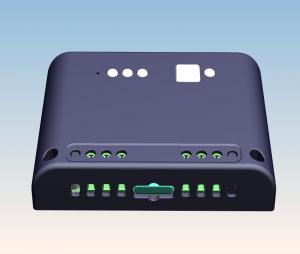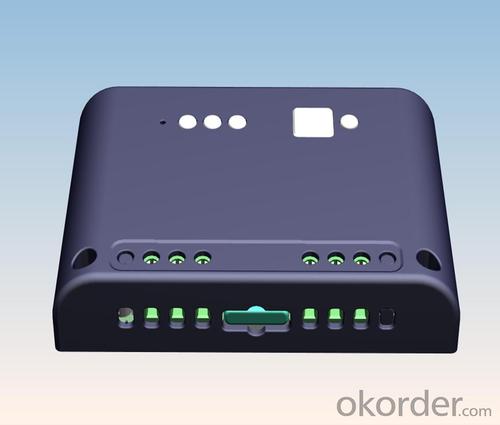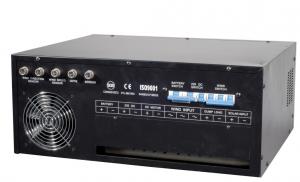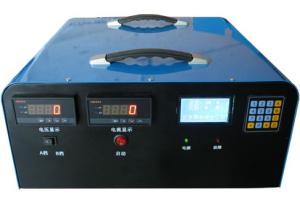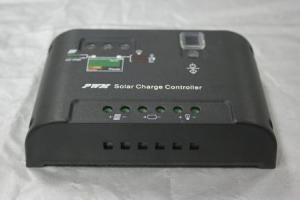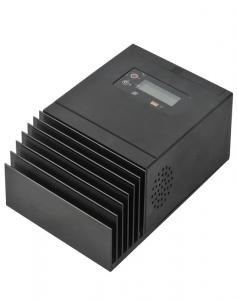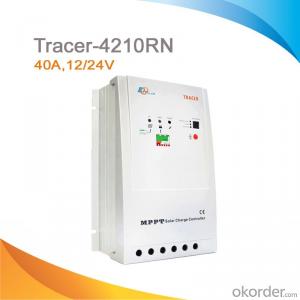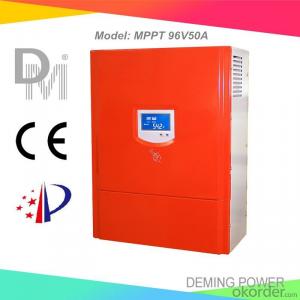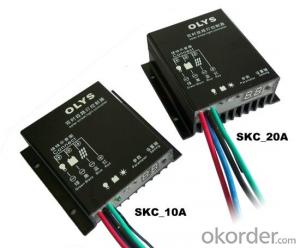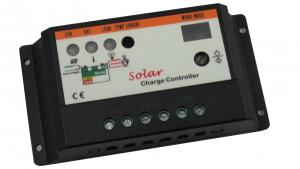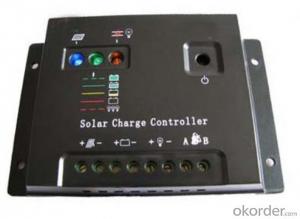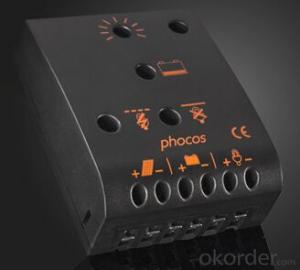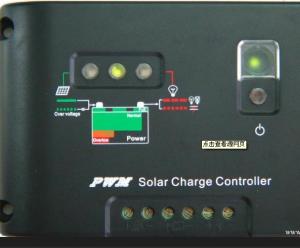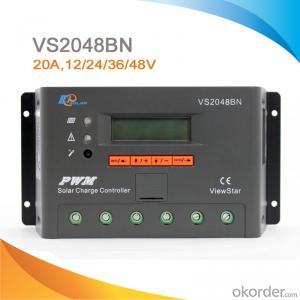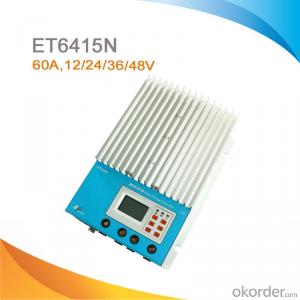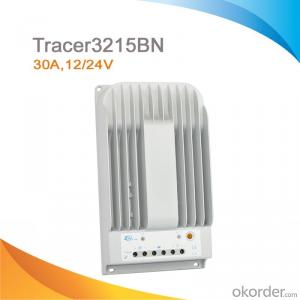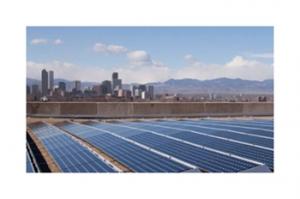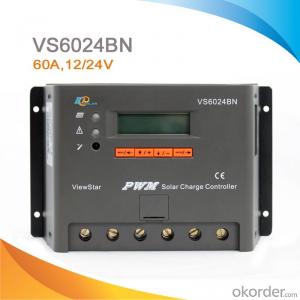H-Series Lithium-Ion Solar PV Controller
- Loading Port:
- Nanjing
- Payment Terms:
- TT/LC
- Min Order Qty:
- 50sets set
- Supply Capability:
- 1-3000sets/month set/month
OKorder Service Pledge
OKorder Financial Service
You Might Also Like
Main features of H-Series PV controller:
Professional MCU microprocessor control, the real charge and discharge of intelligent control;
Total negative control mode, multi-channel input matrix control of solar cells
High pressure, long life of the IGBT as the main switching device controller
Brightest charge voltage detection with "bad back" control to prevent switching into oscillation state
Control circuit and main circuit completely isolated, with a high anti-interference ability
Protection function, operation status, fault LED indicate
Low-power display state, further reducing its loss
Enables parallel operation of multiple machines
Against reverse battery
Remote monitoring (optional)
Optional Configuration of H-Series PV controller:
RS485/RS232 Remote monitoring;
Increase output control
Technical Data of H-Series PV controller:
Voltage level | 12V | 24V | 48V | 110V | 220V |
Rated current range | 30A~100A | 30A~100A | 20A~80A | 20A~60A | 20A~50A |
Battery input | |||||
Rated input voltage (VDC) | 12 | 24 | 48 | 110 | 220 |
Under-voltage protection (VDC) | ≤10.8 | ≤21.6 | ≤43.2 | ≤99.0 | ≤198.0 |
Recovery voltage (VDC) | ≥12.3 | ≥24.6 | ≥49.2 | ≥115.0 | ≥230.0 |
Over-voltage protection (VDC) | ≥16.5 | ≥33.0 | ≥66.0 | ≥150.0 | ≥290.0 |
Over-voltage recovery (VDC) | ≤15.5 | ≤31.0 | ≤62.0 | ≤142.0 | ≤284.0 |
Solar energy input | |||||
Max. open circuit voltage (VDC) | 25.0 | 50.0 | 100.0 | 230.0 | 450.0 |
Max. charge current (A) | 100 | 100 | 80 | 60 | 50 |
Allow PV array points (N) | 5 | ||||
Float voltage (VDC) | 13.7 | 27.4 | 54.8 | 125.0 | 251.0 |
Overcharge protection voltage (VDC) | ≥14.4 | ≥28.8 | ≥57.6 | ≥132.0 | ≥264.0 |
Charge recovery voltage (VDC) | ≤13.2 | ≤26.4 | ≤52.8 | ≤121.0 | ≤242.0 |
DC output | |||||
Rated output voltage (VDC) | 12 | 24 | 48 | 110 | 220 |
Max. output current (A) | 100A | 100A | 80A | 60A | 50A |
Overload capacity | 120% overload 60 seconds off the output / 150% overload for 10 seconds to close the output | ||||
Protection function | Battery over charge, over discharge the battery, the battery reversed,solar cells reversed , counter-attack by night charge , overheating, output overload, output short circuit | ||||
Serial communication | RS485(A、B) | ||||
Mechanical dimensions, work environment | |||||
Size ( D x W x H ) | 350 x 500 x180 | ||||
Reference weight (Kg) | 25 | ||||
Protection level | IP41 | ||||
Max. working altitude (m) | ≤3000 | ||||
Temperature range (℃) | -20 ~ +65 | ||||
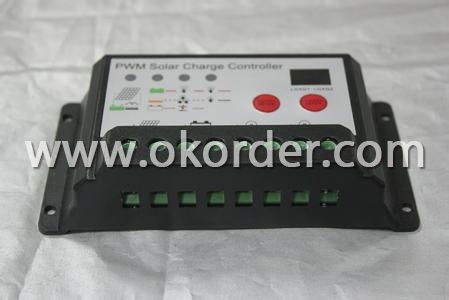
H-Series PV controller
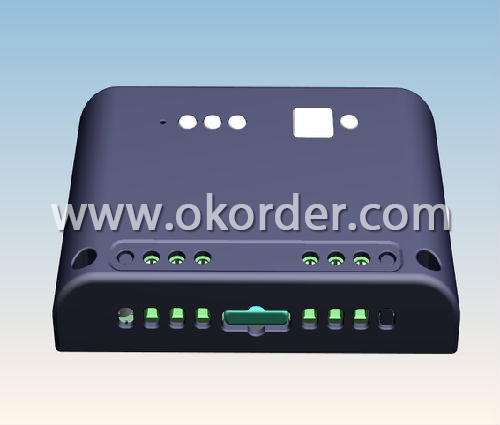
H-Series PV controller
Packaging & Delivery of H-Series PV controller:
Packaging: Wooden box or Customized
Delivery: Depends on the quantity or Customized
- Q: How does a solar controller handle battery capacity testing?
- A solar controller handles battery capacity testing by periodically monitoring the voltage and current levels of the battery during charging and discharging cycles. It uses advanced algorithms to analyze this data and calculate the battery's state of charge (SOC) and state of health (SOH). The controller also ensures that the battery is not overcharged or discharged beyond safe limits, protecting it from potential damage.
- Q: What is the operating temperature range of a solar controller?
- The operating temperature range of a solar controller typically falls between -40 degrees Celsius to 85 degrees Celsius.
- Q: Can a solar controller be used in a solar-powered water desalination system?
- Yes, a solar controller can be used in a solar-powered water desalination system. The solar controller is responsible for regulating and optimizing the energy flow from the solar panels to the system, ensuring efficient operation and protecting the batteries from overcharging or discharging. In a solar-powered water desalination system, the solar controller would play a crucial role in managing the energy supply to power the desalination process, making it an essential component for effective and sustainable operation.
- Q: Can a solar controller be used with a solar-powered marine navigation system?
- Yes, a solar controller can be used with a solar-powered marine navigation system. A solar controller, also known as a charge controller, is an essential component of a solar power system. It regulates the flow of electricity from the solar panels to the battery bank, ensuring optimal charging and preventing overcharging or damage to the batteries. In the case of a solar-powered marine navigation system, the solar controller plays a crucial role in managing the energy generated by the solar panels. It ensures that the batteries are charged efficiently and protects them from overcharging, which can lead to reduced battery life or even failure. By using a solar controller, the solar-powered marine navigation system can harness the energy from the sun and convert it into usable power for the navigation equipment. This allows for reliable and sustainable operation of the system, even in remote or off-grid locations where traditional power sources may be limited or unavailable. Therefore, a solar controller is not only compatible but also necessary for the proper functioning and longevity of a solar-powered marine navigation system.
- Q: Can a solar controller be used with solar-powered water purification systems?
- Yes, a solar controller can be used with solar-powered water purification systems. A solar controller helps regulate and optimize the charging of batteries in solar systems, ensuring that the batteries are not overcharged or damaged. Since many solar-powered water purification systems rely on batteries to store and supply power, a solar controller is essential in managing the charging process efficiently and effectively.
- Q: Can a solar controller be used with different types of solar panel grounding systems?
- Yes, a solar controller can be used with different types of solar panel grounding systems. The solar controller is responsible for regulating the charge coming from the solar panels and managing the flow of electricity to the batteries or grid. It does not depend on the grounding system of the solar panels, which is mainly for safety purposes. However, it is important to ensure that the solar controller is compatible with the type of solar panel grounding system being used to ensure proper functionality and safety.
- Q: Can a solar controller be used in a solar-powered refrigeration system?
- Yes, a solar controller can be used in a solar-powered refrigeration system. A solar controller is a device that regulates the flow of electricity from solar panels to the batteries or electrical loads. In a solar-powered refrigeration system, the solar controller helps manage and optimize the power generated by the solar panels, ensuring that the refrigeration system operates efficiently and effectively. It helps protect the batteries from overcharging, ensures proper voltage levels, and helps maximize the use of solar energy in the system.
- Q: How does a solar controller handle battery reconditioning?
- A solar controller handles battery reconditioning by periodically initiating a desulfation process. This process involves sending high voltage pulses to the battery, which helps break down and remove sulfur build-up on the battery plates. By doing so, it helps restore the battery's capacity and prolong its overall lifespan.
- Q: Can a solar controller be used with gel batteries?
- Yes, a solar controller can be used with gel batteries. Gel batteries require a specific charging profile, and a solar controller can be programmed or adjusted to match the charging needs of gel batteries. This ensures that the batteries are charged efficiently and safely, maximizing their performance and lifespan.
- Q: How do I connect a solar controller to a remote monitoring system?
- To connect a solar controller to a remote monitoring system, you will typically need to follow a few steps. First, ensure that your solar controller is compatible with a remote monitoring system. Check the specifications and documentation provided by the manufacturer to confirm this compatibility. Next, identify the communication method supported by your solar controller and the remote monitoring system. It could be via Wi-Fi, Ethernet, cellular network, or other protocols. This information will help you determine the necessary hardware or software components required for the connection. Once you have the necessary components, follow the instructions provided by the remote monitoring system to set up the connection. This may involve configuring network settings, entering authentication details, or registering your solar controller on the monitoring platform. Ensure that both the solar controller and the remote monitoring system are powered on and connected to the same network or communication channel. Test the connection to verify that data from the solar controller is being transmitted and displayed on the remote monitoring system. If you encounter any difficulties during the setup process, consult the user manuals or reach out to the manufacturers for further assistance.
Send your message to us
H-Series Lithium-Ion Solar PV Controller
- Loading Port:
- Nanjing
- Payment Terms:
- TT/LC
- Min Order Qty:
- 50sets set
- Supply Capability:
- 1-3000sets/month set/month
OKorder Service Pledge
OKorder Financial Service
Similar products
Hot products
Hot Searches
Related keywords
